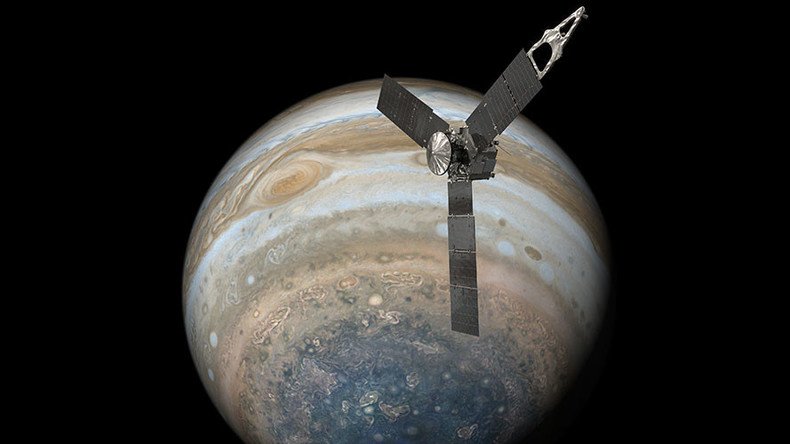Stunning detail of Jupiter's mysterious Great Red Spot captured in 'closest ever' photos

NASA’s Juno spacecraft completed its closest ever flyby of Jupiter's iconic Great Red Spot, capturing some stunning images in the process.
My latest #Jupiter science flyby is complete! All science instruments + #JunoCam were operating to collect data https://t.co/gITSYkWmO6pic.twitter.com/fOc6Z8USdF
— NASA's Juno Mission (@NASAJuno) July 11, 2017
A number of the images have now been sent back to Earth for all to enjoy, detailing the gas giant’s ‘Great Red Spot’ – a gigantic high-pressure zone twice the size of Earth.
Scientists say the spot, monitored since 1830, is a massive swirling storm, possibly hammering the solar system's biggest planet for over 350 years.
Spot spotted! #JunoCam raw images from my #Jupiter#GreatRedSpot flyby are available now. Download, process + share https://t.co/zx6fcc7Fzupic.twitter.com/NJafDJVVW6
— NASA's Juno Mission (@NASAJuno) July 12, 2017
"For generations people from all over the world and all walks of life have marveled over the Great Red Spot," said Scott Bolton, principal investigator of Juno from the Southwest Research Institute in San Antonio. "Now we are finally going to see what this storm looks like up close and personal."
It was the sixth time Juno has flown close to Jupiter, which it does once every 53 days, which helps scientists see what exactly may be occurring on the planet.
The space agency has also encouraged people to download the images and process their own creations, which some have already done, resulting in some mesmerizing creations.
Great Red Spot detail. @NASAJuno Based on work by Gerald Eichstädt. https://t.co/v2TtHK0j01pic.twitter.com/OrB9hOjoag
— Seán Doran (@_TheSeaning) July 12, 2017
My attempt at processing & animating the latest #Jupiter#space#photo from @NASAJuno! #Juno#JunoCam#GreatRedSpot#C4D#NASApic.twitter.com/G2RTMqjvzW
— Glitch Black (@Glitch_Black) July 12, 2017
My processed version of Jupiter's Great Red Spot, by NASA's Juno spacecraft during the July 10 flyover. @nasajuno#GreatRedSpotpic.twitter.com/WK5fxHJoJW
— Ernie Mastroianni (@erniemas) July 12, 2017
Juno also spotted another "face" on #Jupiter, and this one's pretty creepy 😮 pic.twitter.com/8tATYGlLzU
— Jason Major (@JPMajor) July 12, 2017
#Jupiter's Great Red Spot from @NASAJuno Perijove 7!!! - https://t.co/EieVHVIBXEpic.twitter.com/osGuU1EfPk
— Kevin M. Gill (@kevinmgill) July 12, 2017
This is my first attempt at processing a #NASA image. @NASAJuno@NASA#Junopic.twitter.com/lmupqUi7Xc
— ★Sith Lord Rachelle☾ (@GalileoMoon) July 12, 2017
Juno was launched in August 2011 and entered Jupiter’s orbit on July 4, 2016. It has been collecting data and information since.
Juno's next close flyby will occur on September 1.












